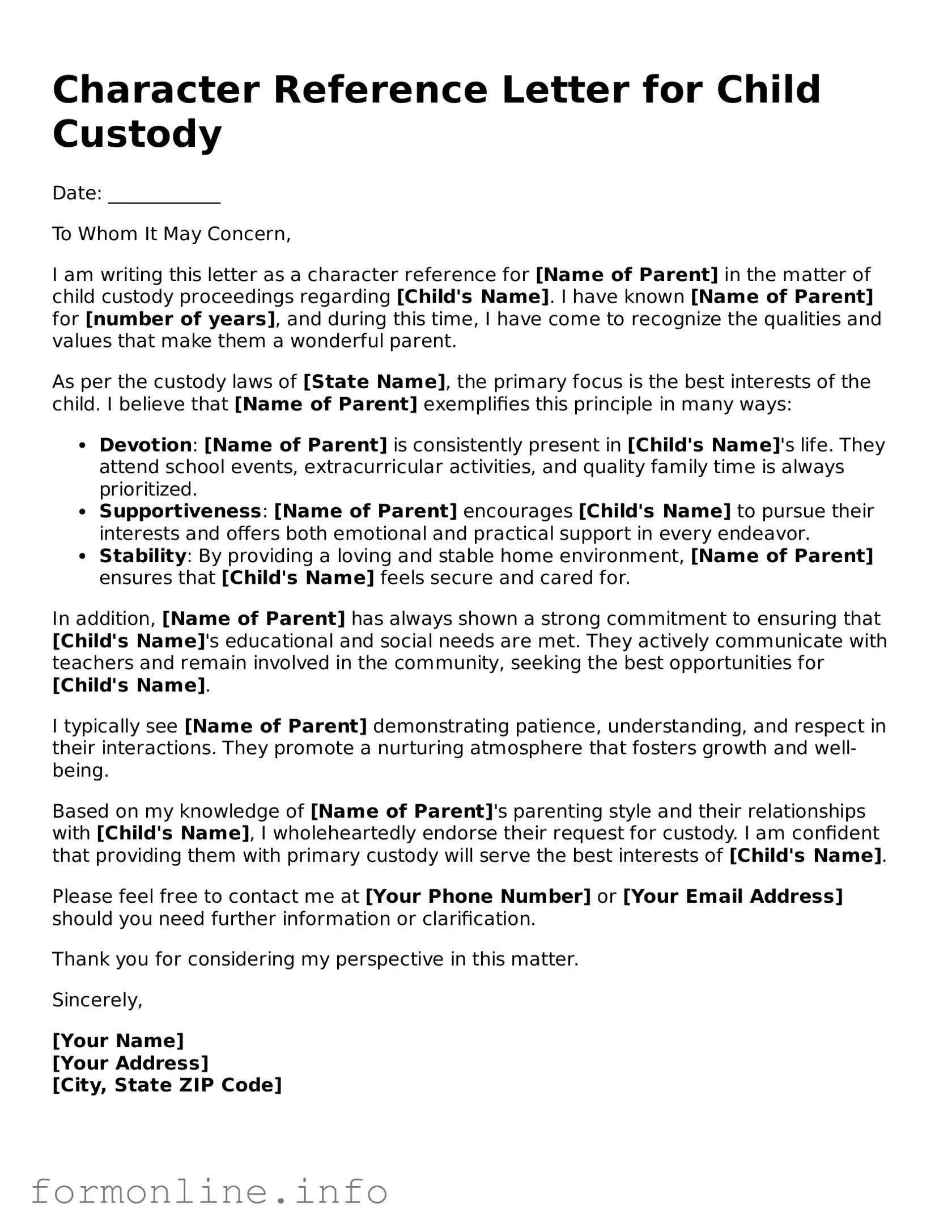Character Reference Letter for Child Custody
Date: ____________
To Whom It May Concern,
I am writing this letter as a character reference for [Name of Parent] in the matter of child custody proceedings regarding [Child's Name]. I have known [Name of Parent] for [number of years], and during this time, I have come to recognize the qualities and values that make them a wonderful parent.
As per the custody laws of [State Name], the primary focus is the best interests of the child. I believe that [Name of Parent] exemplifies this principle in many ways:
- Devotion: [Name of Parent] is consistently present in [Child's Name]'s life. They attend school events, extracurricular activities, and quality family time is always prioritized.
- Supportiveness: [Name of Parent] encourages [Child's Name] to pursue their interests and offers both emotional and practical support in every endeavor.
- Stability: By providing a loving and stable home environment, [Name of Parent] ensures that [Child's Name] feels secure and cared for.
In addition, [Name of Parent] has always shown a strong commitment to ensuring that [Child's Name]'s educational and social needs are met. They actively communicate with teachers and remain involved in the community, seeking the best opportunities for [Child's Name].
I typically see [Name of Parent] demonstrating patience, understanding, and respect in their interactions. They promote a nurturing atmosphere that fosters growth and well-being.
Based on my knowledge of [Name of Parent]'s parenting style and their relationships with [Child's Name], I wholeheartedly endorse their request for custody. I am confident that providing them with primary custody will serve the best interests of [Child's Name].
Please feel free to contact me at [Your Phone Number] or [Your Email Address] should you need further information or clarification.
Thank you for considering my perspective in this matter.
Sincerely,
[Your Name]
[Your Address]
[City, State ZIP Code]
